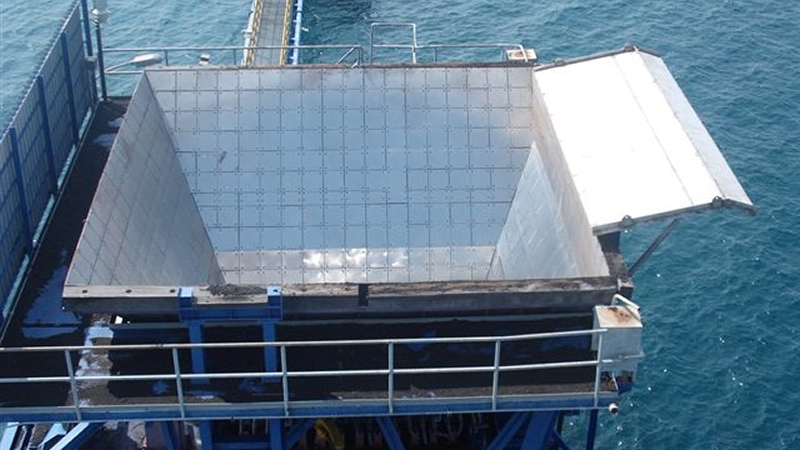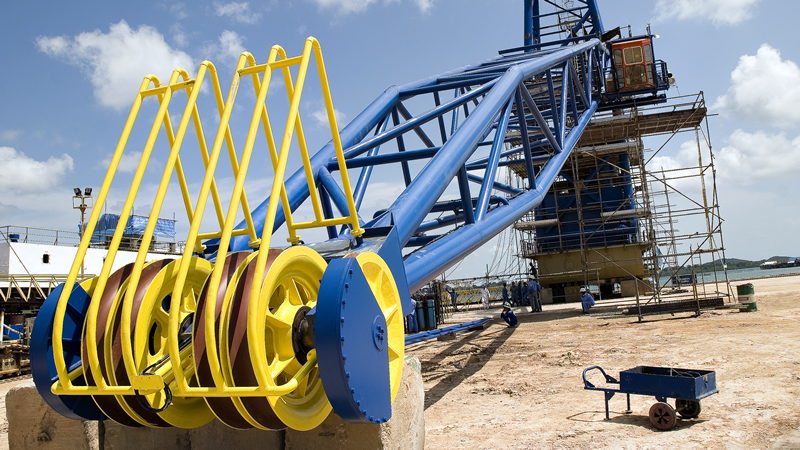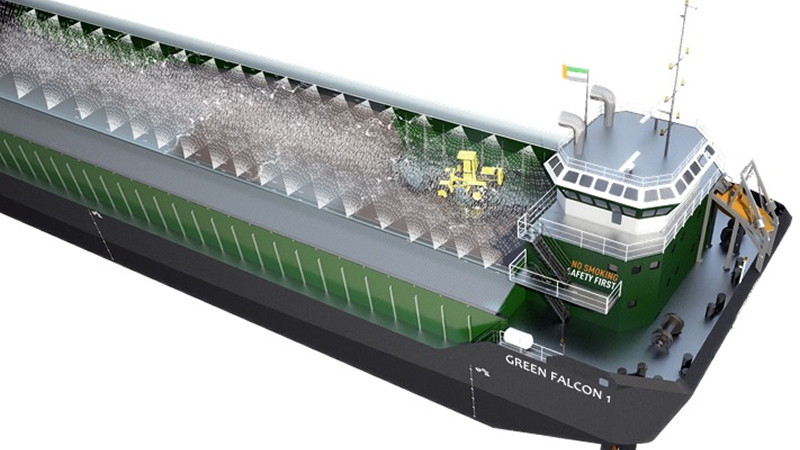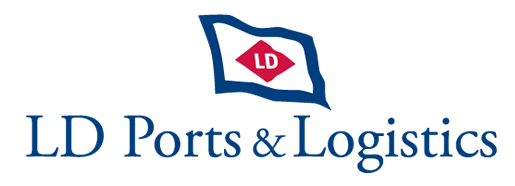Dust Emission Suppression
uses systems for controlling and suppressing airborne dust emission during bulk handling operations.
Developing environmentally friendly transshipment solutions
Fugitive dust emissions are associated with bulk handling. In the dry bulk industry, dust emissions are generated during the mining, transport and handling of the cargo. Environmental, health and safety issues become the primary reasons for concern. Dust can also have a major economic impact as the result of increased maintenance and clean-up costs.
Strict environmental regulations as well as the sensitivity with respect to limitation of dust emission have motivated Louis Dreyfus Ports & Logistics to provide integrated dust management solutions and systems to reduce the fugitive dust emissions during bulk handling operations.

Grab cranes fitted on LDPL FC Transhipper Units are lattice boom cranes, designed to optimize the frame’s stress capacity. This enhances rigidity while reducing weight, which contributes greatly to its exceptional lifting capacity and optimizes dynamic performance. The crane ensures true performance as both the structure and machinery are entirely designed out of the engineering ingenuity skills of LDPL who uses renowned makers for the different components. The proposed designed is born out of 30 years of optimization process between LDPL and LDA, in the field of offshore transshipment.
LDPL grab cranes are heavy duty, high performance, 4-ropes type cranes.

They are designed with snag-load protection to prevent shock loads from parting crane wires. The cranes are equipped with accurate weight scales that transmit cargo lift weight data to a central computer and data loggers to record key operational data about the operational cycle.
LDPL Floating Crane Transhipper Unit uses special fit-for-purpose heavy duty clamshell grabs with enclosed scales, high resistance sealed lip plates optimized for the environmentally friendly discharge of bulk cargo. This solution minimizes dust pollution, material loss and cargo spillage during operation.

Anti-pollution characteristics
High enclosed scales
The highly enclosed shell minimizes the influence of wind on the cargo inside the grab.
Steep plates
The grab is fitted with steep plates to ensure that the cargo will not be compressed within it. This reduces material loss and minimizes pollution of the environment.
Pyramid covers
As shown on above drawing, the upper side of scales is provided with steep plates that are opened at the top. Thus it is possible to reduce cargo loss even further by welding steel pyramid covers on top of the shells. In case of overfilling, there is still room under the covers for the additional cargo.
Atomized fresh water sprays
In the wake of a higher requirement for stringent compliance and control of coal dust emission for Hassyan Clean Coal Power plant project in Dubai, LD Ports & Logistics has developed an atomized fresh water spray system for controlling and suppressing airborne dust emission during coal handling operations. Regarding barging operations, LDPL uses specific barges that are specially designed for this project. These barges are equipped with their own dust suppression systems.
The cargo compartment is fitted with an atomized water screen to create a continuous water spray barrier that encompasses the dust and coal particles when the grab is opening. This barrier covers the whole lengths and both sides of the coal compartment, ensuring an optimal and permanent protection during transhipment, transportation and unloading of barge. The water droplet size is matched as closely as possible to the cargo dust particles suspended in the air, combining the water and dust particles to add weight and bring the dust particles down into the cargo compartment, where they are trapped by the steel cover structure. Each barge generates her own fresh water reserve through reverse osmosis process and is fitted with a water drainage collection and treatment system on board.
Anti-pollution plates
Anti-pollution plates, between barges and hopper, reduce substantially coal losses on water or on terminal during cranes operations. This technology not only solves critical dust emission issues but also pays its way with economic benefits accruing in the form of reduction in clean-up and coal loss.
Air pollution: NOx emissions
The control of diesel engine NOx emissions is achieved through the survey and certification requirements leading to the issue of an Engine International Air Pollution Prevention (EIAPP) Certificate and the subsequent demonstration of in service compliance in accordance with the requirements of the mandatory, regulations 13.8 and 5.3.2 respectively, NOx Technical Code 2008 (resolution MEPC.177(58) as amended by resolution MEPC.251.(66)).
The NOx control requirements of Annex VI apply to install marine diesel engine of over 130kW output power other than those used solely for emergency purposes irrespective of the tonnage of the ship onto which such engines are installed. Tier II regulation is applied on LDPL fleet for all their projects.
n = engine’s rated speed (rpm) |
||||
e.g. 720rpm – 12.1 | ||||
e.g. 720rpm – 9.7 | ||||
e.g. 720rpm – 2.4 | ||||
